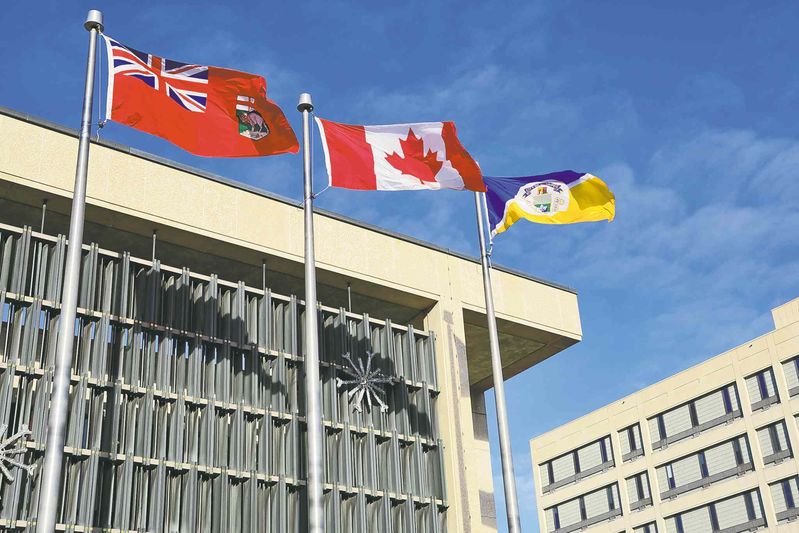By Brent Bellamy, Creative Director and Architect


Two weeks ago, Winnipeggers made an emphatic statement that it is time to move in a new direction. On Election Day, voters rewarded mayoral candidates who were not afraid to dream. They overwhelmingly supported those with urban-focused priorities, moving past the traditional debates of potholes, photo radar and synchronizing traffic lights, to engage with ideas that described a broader vision for the city.
The biggest surprise of the day was the performance of Brian Bowman and Robert-Falcon Ouellette. Both men came into the campaign with low name recognition and little public support. In the end, each captured the attention of voters by presenting big-picture visions for the city. They had many differing ideas, but the underlying commonality in their platforms was a commitment to an openly urbanist agenda.
As mayor, Brian Bowman joins Edmonton's Don Iveson and Calgary's Naheed Nenshi as young, telegenic leaders of Western Canadian cities in need of reinventing their urban-growth policy. Like his western counterparts, Bowman is now the mayor of a city facing the consequences of decades of sprawling, low-density growth, including crumbling infrastructure, reduced civic services, budget deficits and higher taxes.
Several of his campaign announcements were initiatives to build a more sustainable city form, many focusing on the promotion of a walkable and liveable downtown core.
Bowman was the only candidate to set a hard target for population growth in the city centre, 5,000 people over his four-year term. To achieve this, he offered a series of seemingly smaller ideas that together respond to the greater objective of building a diverse and vibrant downtown community. Initiatives such as: incentives for rooming houses and affordable housing, removing the pedestrian barricades at Portage and Main, improving street lighting and urban parks, building dog runs and community centres, funding museums and public art, developing a seasonal pedestrian mall and promoting a creative campus in the Exchange District, are all strategies that work together to grow the conditions that make urban living attractive and build a downtown residential market that is sustainable long term, without subsidies.
A campaign promise shared by Bowman and Ouellette in this election, as well as former mayor Sam Katz in the last, was to impose a higher rate of taxation for surface parking lots to increase development pressure and reduce incentive for building demolition. This initiative would help improve the urban quality of a city so dominated by surface parking most people don't even recognize that there has been a gravel lot the size of a football field at Portage and Main for two generations.
Bowman's most controversial pledge was to support the construction of six bus rapid transit corridors by the year 2030. In every other major Canadian city, rapid-transit controversy is caused by the discussion of where, not if, it should happen. Most cities have moved beyond the debate over its value and understand it to be an investment catalyst to stimulate and target infill growth through transit-oriented development (TOD). Even Winnipeg's meagre transit corridor has spawned The Yards at Fort Rouge TOD that will add 1,800 new residents to the Lord Roberts neighbourhood.
This long list of election dreams presents a change in attitude and a progressive vision for Winnipeg. These ideals were supported overwhelmingly by voters, but the new mayor remains a single voice in a very large group of people needed to bring them to reality. To move forward successfully, it begins with a city council that is unified behind this mandate in a newly collaborative relationship that works in co-operation towards these goals.
Implementing a new vision by a cash-strapped civic government with few avenues for revenue growth, presents a great challenge. Only a strong, unified council will be able to effectively engage the provincial and federal governments in a necessary and non-partisan collaboration as complete partners in Winnipeg's future. Continuing the adversarial relationships of the past will only put us back on the old path, filled with roadblocks and inertia.
The mayor's role is to be the champion of a vision. If the province is able to adopt these urbanist principles and dovetail its priorities with the city's new agenda, everyone in Manitoba will benefit.
Working together to improve the city's urban quality by promoting density, limiting sprawl and investing in the core area will make Winnipeg more sustainable and prosperous, becoming more attractive to our young people, immigrants, tourists and investors. The hope is that one day the province becomes a full partner in the city's vision and begins to make progressive moves itself, such as a capital-region strategy to equalize the infrastructure and taxation stresses suburbs and bedroom communities place on the city.
Unified local governments standing behind a clear set of goals is vital when federal money becomes available. With priorities defined, the civic and provincial governments can present a united team and negotiate from a position of strength.
An example of this is Ottawa, where in 2011, council voted unanimously (24-0) to support a comprehensive rapid transit plan. They quickly lobbied the Province of Ontario, which then presented a unified front to the federal government to tap into the Building Canada Fund. Within two years, a $2-billion LRT system started construction and debate has now moved to expansion. Contrast this scenario with Winnipeg, where the city and province have fought each other for years over rapid transit. Funding from the same federal program was balked at, as we debated the issue and tried unsuccessfully to divert the money to filling potholes. Today we have one-half of one line complete.
Collaboration between levels of government is not only vital to secure funding sources, but many issues affecting the city, including several of Mayor Bowman's campaign promises, fall under provincial jurisdiction. Housing initiatives, parking-lot taxation and regulating river levels in the city to unlock the infill development potential of Winnipeg's riverbank properties are all critical urban issues that are controlled by the province.
The citizens of Winnipeg voted for a new urban agenda. A mandate was given to build a more progressive, forward looking city. This change will not happen without forging new collaborative relationships between every level of government that represents the taxpayers of Winnipeg.
Working together as partners towards this new mandate, can result in a modern, sustainable and prosperous city that is the economic engine of this province and is competitive on the national stage.
Brent Bellamy is senior design architect for Number Ten Architectural Group.
Republished from the Winnipeg Free Press print edition November 10, 2014 B8

